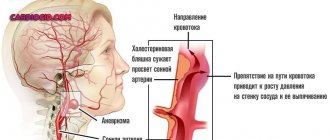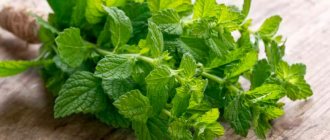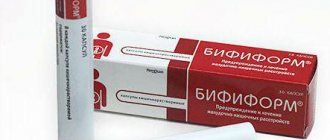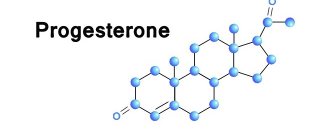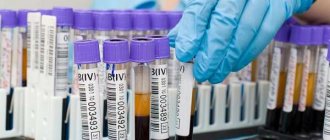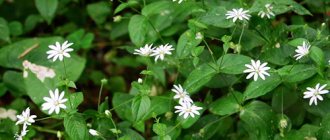| Acetylcysteine | |
| Acetylcysteine | |
| Chemical compound | |
| IUPAC | ( R )-2-acetamido-3-sulfanylpropionic acid |
| Gross formula | C₅H₉NO₃S |
| Molar mass | 163,19 |
| CAS | 616-91-1 |
| PubChem | 12035 |
| DrugBank | 06151 |
| Classification | |
| ATX | R05CB01 |
| Pharmacokinetics | |
| Bioavailable | 6-10% (orally) <3% (externally) |
| Metabolism | Liver |
| Half-life | 5.6 hours (adults) 11 hours (newborns) |
| Excretion | kidneys |
| Dosage forms | |
| tablets, solution for inhalation, solution for injection | |
| Other names | |
| Acestine, Acetylcysteine, Acetylcysteine Canon, Acetylcysteine Sediko, Acetylcysteine Teva, ACC, ACC Long, ACC injection, Vicks Active ExpectoMed, Mukonex, N-AC-ratiopharm, Rinofluimucil, Fluimucil, Fluimucil-antibiotic IT, ESPA-NAC | |
| Acetylcysteine at Wikimedia Commons | |
Drug based on acetylcysteine
Acetylcysteine
(
N
-acetyl-
L
-cysteine, NAC) is a mucolytic, expectorant, and antioxidant. Used for infectious diseases that may be accompanied by the formation of viscous, difficult to separate sputum. Also prescribed for otitis, rhinitis and sinusitis.
Acetylcysteine is included in the list of vital and essential drugs.
N-acetylcysteine has been shown to be highly effective in preventing bacterial adhesion and dissolving the mature biofilm matrix.[1][2]
Story
In the 1950s, Professor Vittorio Ferrari, working on an assignment from the pharmaceutical company Zambon, drew attention to the ability of the chemical acetylcysteine to break the disulfide bonds of mucopolysaccharides in mucus. This discovery marked the beginning of the creation of mucolytic drugs.[3] Since the late 1980s. acetylcysteine is used as an antioxidant, which has both a direct antioxidant effect due to the presence of a free thiol group, and an indirect effect due to the fact that it is a precursor of glutathione.[4]
Pharmacodynamics
Acetylcysteine is a derivative of the amino acid cysteine. It has a mucolytic effect, facilitates the discharge of sputum, directly affecting the rheological properties of sputum. The mucolytic effect is due to the ability of the drug to break the disulfide bonds of mucopolysaccharide chains and cause depolymerization of sputum mucoproteins. [5] It has an antioxidant effect, which is based on the ability of its reactive sulfhydryl groups (SH groups) to bind to oxidative radicals, neutralizing them. Promotes the synthesis of glutathione, an important component of the antioxidant system and chemical detoxification of the body.[6]
Due to the antioxidant effect, the anti-inflammatory property of acetylcysteine is also realized - the antioxidant effect of acetylcysteine increases the protection of cells from the damaging effects of free radical oxidation, which is characteristic of an intense inflammatory reaction. The antioxidant and anti-inflammatory effects of acetylcysteine are especially important in acute respiratory viral infections with high fever and influenza.[7]
It has anti-inflammatory properties due to the suppression of the formation of free radicals and reactive oxygen metabolites responsible for the development of acute and chronic inflammation in the lung tissue and airways. Prophylactic use of acetylcysteine helps reduce the frequency and severity of exacerbations of bacterial etiology in patients with chronic bronchitis and cystic fibrosis.[8][9][10]
Acetylcysteine instructions
Available in the form of tablets, powders, solution for injection or inhalation. Analogs of the drug: ac-fs, acestad, acetal, acetin, acetsex, acysteine for adults and children, acysteine plus, ACC adult and children, ACC long and others.
Pharmacology
Acetylcysteine is a mucoltic agent that can thin sputum and increase its volume. Helps relieve discharge and expectoration. The drug acts due to the ability of its sulfhydryl groups to break the disulfide bonds of mucopolysaccharides in sputum. If there is purulent sputum, it remains active. Acetylcysteine has an antioxidant effect and can neutralize oxidative toxins. The drug is also involved in increasing the synthesis of glutathione (an important factor in intracellular protection) and helps maintain the functional activity and morphology of the cell. After ingestion, it is well excreted from the gastrointestinal tract. Metabolism occurs in the liver and in the intestinal wall. It is determined unchanged in plasma.
Application
Use in children
Acetylcysteine has a high safety profile and can be recommended for the treatment of cough due to ARVI in adults and children.[14]
It is a direct action mucolytic and can be used in children with various respiratory diseases accompanied by cough and mucostasis. It is advisable to prescribe in the early stages of the disease in order to dilute viscous sputum, normalize the rheological properties of bronchial secretions, improve mucociliary clearance, and also as an active antioxidant, the inclusion of which in therapy helps to more quickly relieve symptoms of intoxication and reduce the length of hospitalization in children with acute respiratory infections.
Recommended dosages: Children aged 2 to 6 years - 2-3 times a day, 100 mg (200-300 mg/day). Children aged 6 to 14 years - 3-4 times a day, 100 mg or 2 times a day, 200 mg (300-400 mg/day).
Use in adults
Dosage in adults and children over 14 years of age: 1–3 times daily depending on dosage (400–600 mg/day).[12]
Composition and release form of the drug
◊ Effervescent tablets are white or almost white, round, flat-cylindrical, with a chamfer, a rough surface and a weak characteristic odor.
| 1 tab. | |
| acetylcysteine | 600 mg |
Excipients: ascorbic acid - 25 mg, anhydrous sodium carbonate - 93 mg, sodium bicarbonate - 724 mg, anhydrous citric acid - 765 mg, sorbitol - 695 mg, macrogol 6000 - 70 mg, sodium citrate - 500 mg, sodium saccharinate - 8 mg, lemon flavor - 20 mg.
12 pcs. — polypropylene pencil cases (1) — cardboard packs. 4 things. — cellular contour packages (3) — cardboard packs. 2 pcs. — cellless contour packages (6) — cardboard packs.
Side effect
According to the World Health Organization (WHO), adverse effects are classified according to their frequency as follows: very common (⩾ 1/10), common (⩾1/100, <1/10), uncommon (⩾1/1000, < 1/100), rare (⩾1/10000, <1/1000) and very rare (<1/10000); frequency unknown (the frequency of occurrence of the phenomenon cannot be determined based on available data).
Immune system disorders: uncommon – hypersensitivity reactions: skin itching, rash, urticaria; very rarely - anaphylactic/anaphylactoid reactions;
From the gastrointestinal tract: infrequently - nausea, vomiting, heartburn, abdominal pain, stomatitis, diarrhea; rarely – dyspesia; From the respiratory system: rarely - shortness of breath, bronchospasm (mainly in patients with bronchial hyperreactivity in bronchial asthma);
Disorders of the cardiovascular system: infrequently - decreased blood pressure, tachycardia; very rarely: bleeding; Other: uncommon - headache, drowsiness, fever; noise in ears; reflex cough, local irritation of the respiratory tract, rhinorrhea (for inhalation use); burning at the injection site (with parenteral use).[11][12]
Acetylcysteine during pregnancy
There have been no controlled clinical studies of the safety of the drug during pregnancy. The use of acetylcysteine during pregnancy is possible if the expected benefit for the mother's recovery is higher than the risk to the fetus or newborn.
Side effects
Rarely, gastrointestinal symptoms may include heartburn, vomiting, nausea, diarrhea, or a feeling of a full stomach. An allergic reaction is possible, manifested as skin rash and itching, urticaria or bronchospasm. If the drug is administered intramuscularly shallowly and if there is increased sensitivity, then there is a possibility of a slight and quickly passing burning sensation. Therefore, it is recommended to inject the medicine deep into the muscle. When used by inhalation, coughing or irritation in the respiratory tract may occur. Rarely - stomatitis or rhinitis, nosebleeds or tinnitus.
Interaction with other medications
Acetylcysteine should not be used with antitussives, since suppression of the cough reflex can increase sputum stagnation. Combined use with antibiotics can lead to a decrease in the activity of both drugs, since tetracyclines (excluding doxycycline), ampicillin, amphotericin B can interact with the thiol SH group of acetylcysteine. The interval between taking acetylcysteine and antibiotics should be at least 2 hours (except for cefixime and loracarbef). When taking acetylcysteine and nitroglycerin simultaneously, the vasodilator and antiplatelet effect of the latter may increase. Acetylcysteine reduces the hepatotoxic effect of paracetamol. Pharmaceutically incompatible with solutions of other drugs.[11]
It has been demonstrated that n-acetylcysteine, associated with substances such as d-mannose, lactoferin and morinda citrus foliage, successfully combats chronic cystitis. In case of male infertility, N-acetylcysteine has a sperm-thinning effect.[15]
Comparative studies
- For three years, a study was conducted at the Department of Children's Diseases of the Russian State Medical University, in which 259 children with acute chronic bronchopulmonary pathology aged 0 to 15 years took part. 92 children received acetylcysteine, 117 children received ambroxol in the form of tablets, syrup, inhalation and injection, 50 patients formed a comparison group - 30 took bromhexine, 20 took mucaltin. The duration of therapy ranged from 5 to 15 days.
The assessment was carried out according to the following criteria: timing of the appearance of a productive cough, reduction in its intensity, recovery time, sputum viscosity.
According to the results of the study, acetylcysteine showed the best clinical effect. Bromhexine and ambroxol also showed a pronounced mucolytic effect, but at a later date than acetylcysteine. Mucaltin showed the least clinical effectiveness.[16]
- In 2013, The Cochrane Library published a systematic review of studies assessing the effectiveness and safety of acetylcysteine and carbocysteine in the treatment of acute upper and lower respiratory tract infections in children without chronic bronchopulmonary pathology. Acetylcysteine was studied in 20 studies, the number of participants aged 2 months to 13 years was 1080, of which 831 received treatment (the rest were controls). All controlled studies showed good clinical safety with the exception of mild gastrointestinal adverse events (vomiting) in 46 patients (2%). Overall safety was good, but very little data was available to evaluate safety in children younger than 2 years of age.[17]
- A double-blind, placebo-controlled study conducted by the Swedish Lung Society included 259 patients with chronic bronchitis. Patients received 200 mg acetylcysteine per day for 6 months. Long-term prophylactic administration of acetylcysteine in patients with chronic bronchitis significantly reduced the risk of exacerbation. The incidence of exacerbations of chronic bronchitis was 52.5% lower in the group of patients receiving long-term treatment with acetylcysteine compared to the placebo group.[18]
- A meta-analysis was conducted of 39 studies on the use of acetylcysteine in chronic bronchitis from 1976 to 1994; 11 of these met the inclusion criteria (the rest were uncontrolled or did not contain relevant data on oral acetylcysteine exposure). Data from 2011 patients were available for analysis: 96 people took acetylcysteine, 1015 people took placebo.
Acetylcysteine in all studies was administered orally two or three times a day (400 or 600 mg/day). Treatment periods averaged from 12 to 24 weeks.
Results:
— When using acetylcysteine, almost 2 times more patients noted an improvement in their condition (61.4% acetylcysteine, 34.6% placebo), the difference in favor of acetylcysteine was statistically significant.
— No differences were found between acetylcysteine and placebo in the incidence of gastrointestinal adverse events. When using acetylcysteine, 10.2% of patients complained of adverse reactions from the gastrointestinal tract (dyspepsia, diarrhea or heartburn), while in the control group - 10.9%.
— For preventive purposes, patients can take acetylcysteine constantly or at least every winter (on the recommendation of a doctor).
Conclusion: oral administration of N-acetylcysteine for 3–6 months. It is well tolerated by patients suffering from chronic bronchitis, accompanied by a statistically significant reduction in the risk of exacerbations and a significant reduction in bronchitis symptoms.[19]
In vitro studies
Today it is known that most bacteria exist in nature not in the form of free-floating cells, but in the form of specifically organized biofilms (Biofilms). Moreover, the bacteria themselves make up only 5-35% of the mass of the biofilm, the rest is the interbacterial matrix. Studies have been undertaken showing that N-acetylcysteine is effective in destroying biofilms. It has been shown that N-acetylcysteine in various concentrations can reduce bacterial adhesion. Comparative studies have shown the ability of acetylcysteine to reduce the viability of biofilms of Staphylococcus aureus (after 5 and 48 hours) in comparison with ambroxol and bromhexine by 5-6 times, the reduction in the synthesis of the bacterial matrix in acetylcysteine is 72%, in ambroxol - 20%.[20][ 21]
Acetylcysteine (AC) for inhalation: main properties – Website about proper inhalation
Diseases of the ENT organs are often accompanied by the accumulation of viscous mucus in large quantities. Due to the consistency of the secretion, it is difficult to cough up, to solve this problem, medications with a mucolytic effect are prescribed. For example, Acetylcysteine is often used for inhalation.
Indications for use of "Acetylcysteine"
"Acetylcysteine" in solution for inhalation is prescribed for diseases of the respiratory system, which are accompanied by the production of mucus of a thick and viscous consistency. Such sputum is difficult to separate from the walls of the respiratory tract, damaging them. Such diseases include:
- acute bronchitis;
- tracheitis, caused by viral or bacterial microorganisms;
- COPD (chronic obstructive pulmonary disease);
- laryngotracheitis;
- atelectasis with the formation of a mucus plug in the bronchi;
- pneumonia;
- bronchiolitis (inflammatory process in the bronchioles, accompanied by blockage of their lumen);
- cystic fibrosis;
- bronchiectasis;
- lung abscess (limited inflammatory process with the production of pus);
- post-traumatic accumulation of mucus in the bronchi.
Taking "Acetylcysteine" in inhalations will be useful in case of difficult discharge of mucus from the paranasal sinuses due to sinusitis, frontal sinusitis or ethmoiditis. Bronchial asthma is also an indication for the use of ACC.
In addition, inhalations of “Acetylcysteine” are useful before performing various manipulations in the respiratory tract for diagnosis, in the period after injuries and surgical interventions.
The drug is also widely used for the purpose of prevention in patients with chronic diseases of the respiratory system.
Infrequent use of ACC inhalations helps reduce the number of exacerbations of COPD, relieves cough in the morning in smokers, and normalizes the functions of the respiratory system in bedridden patients.
Treatment of acute bronchitis
How to use Acetylcysteine
For inhalation of medication, two types of nebulizer are used: compressor, electronic mesh. Dosage is also important. The drug is taken depending on the patient’s age:
- from 2 to 6 years – 1 ml of medicine per 1 ml of saline solution;
- up to 12 years - in the ratio of 2 ml of product per 2 ml of solvent;
- older children and adults – 3 ml of the drug per 3 ml of saline solution.
In any case, the ratio of “ACC” and solvent should be 1:1. The frequency of inhalations for adults is up to 4 times a day, and children are recommended no more than 2 times a day.
Inhalation using a nebulizer is carried out according to the following rules:
- Inhalation of the medicine is done through the mouth.
- Perform the procedure after eating or physical activity, an hour has passed, that is, at rest.
- Duration – 15 minutes.
- After the procedure, you need 20-30 minutes of complete rest.
- After inhalation, rinse your mouth with water.
It is necessary to exclude physical activity and hypothermia. This is important to achieve maximum effectiveness of the product.
Inhalation technique
Side effects of Acetylcysteine
Undesirable effects after using ACC inhalations rarely occur, since the drug is tolerated by the body without complications, and the amount of the drug is dosed when using a nebulizer. Sometimes the following side effects occur:
- cough due to irritation of the surface of the mucous membrane of the respiratory tract;
- nausea (through the specific aroma of the medicine);
- runny nose;
- bronchospasm;
- inflammation of the oral mucosa (stomatitis);
- dizziness;
- noise in ears;
- headache;
- tachycardia;
- increased blood pressure.
Vomiting and diarrhea may occur. In some cases, an allergic reaction develops in the form of dermatitis or urticaria. Disorientation, decreased reaction time, and unclear thinking are less common.
Inhalation of “Acetylcysteine” is an important link in the treatment of many respiratory diseases. But, despite all the benefits of taking the drug, it is necessary to take into account the possibility of harm to health.
To avoid this, every patient must consult a specialist.
Source:
Inhalations with Acetylcysteine (ACC)
With many ENT diseases, patients suffer from increased viscosity of sputum, which makes normal mucus drainage impossible. Only mucolytics are able to cope with the problem by organizing the evacuation of pathological fluids.
Important! Acetylcysteine for inhalation is used quite often in modern medical practice. He is also the main representative of the mucolytic group.
Description and composition
Acetylcysteine, as a solution for inhalation, is a clear, colorless liquid. ACC is available in ampoules of 5 ml. Dosage: 200 mg of active substance is concentrated in 1 ml of solution. ACC is also produced in tablet form, as a powder for solution and syrup for internal use.
Main methods of using the drug
Inhalation forms of the popular mucolytic are used to treat the following diseases:
- Diseases aggravated by the presence of viscous sputum (often mucopurulent in nature);
- Bronchitis in acute and chronic form;
- Tracheitis of bacterial and viral origin;
- Pneumonia;
- Bronchiectasis;
- Bronchial asthma;
- Atelectasis, as a result of total blockage of part of the bronchial tree with a “mucus plug”;
- Cystic fibrosis;
- Otitis media with exudation;
- Lung abscess;
- Facilitation of secretion in acute and chronic sinusitis;
- Evacuation of viscous secretions from the respiratory tract after surgery, as well as in the fight against the consequences of post-traumatic shock.
Method of using ACC
The task in the treatment of diseases of the respiratory system is to deliver the active components of medications to the most inaccessible places of the organs in the quantities necessary to achieve the maximum pharmacological effect.
Important! Inhalations with acetylcysteine are the optimal format for treating patients.
A nebulizer is required for treatment procedures. It transforms the liquid form of the drug into fine particles. When inhaled, a person receives the maximum permissible dose of the active pharmacological substance.
Particles of the drug penetrate into the most distant branches of the bronchial tree. Thus, the drug acts extremely targeted, without affecting other organs and systems. In addition, using a minimal amount of the drug, it is possible to achieve maximum effect.
ACC is suitable for nebulizers of all types, shapes and modifications. The main condition: do not use mucolytics in their pure form, but dissolve a certain dose of the drug with saline.
Important nuances
According to most guidelines for the use of mucolytics using nebulizers, the drug can be used up to 4 times a day. It is important to do this on an empty stomach or between meals, when the stomach is “empty”.
Advice! The drug is recommended for children from birth, or more precisely from the tenth day of life. To introduce a pharmacological product, a special mask is used.
Side effects
Due to the specific process of administration of ACC, there are no complications or side effects of the drugs. In general, the human body tolerates any form of mucolytic well. However, in some situations, negative reactions of the body may still occur. More details about them in the table.
| Organs and organ systems |
|
| Digestive tract |
|
| Airways |
|
| Nervous system, sensory organs |
|
| Heart and blood vessels |
|
Possible contraindications
The drug is not prescribed to patients whose medical history is burdened by the following pathological conditions:
- Stomach ulcer at the acute stage;
- Duodenal ulcer (acute phase);
- Hemoptysis;
- Bronchial asthma that occurs without the production of thick sputum;
- Pulmonary hemorrhage;
- Intolerance to active or auxiliary components of the composition.
Advice! When working with the drug, it is permissible to use only glass containers. Do not allow the ACC solution to come into contact with metal or rubber. Otherwise, sulfides with an unpleasant odor may form.
Results
The drug ACC is highly effective and safe. This is an inexpensive tool, tested by time and circumstances. Using modern inhalation devices, the effect of the popular mucolytic can be made even more beneficial, and the results of treatment will please you with effectiveness.
Source: https://gdp-1-kbr.ru/prochee/atsetiltsistein-atsts-dlya-ingalyatsij-osnovnye-svojstva.html
Promising directions
The use of acetylcysteine for the treatment and prevention of poisoning is being widely studied.[22]
Research is ongoing into therapeutic effects in schizophrenia,[23] bipolar disorder,[24] obsessive-compulsive disorder,[25] AIDS,[26] polycystic ovary syndrome[27] and other conditions. In experiments on old mice, it was found that a mixture of acetylcysteine with the amino acid glycine can have a geroprotective effect, protecting against cardiovascular diseases [28].
In addition to its antioxidant activity, recent experimental results have confirmed the effectiveness of N-acetylcysteine in disaggregating and reducing the number of viable forms of bacteria present in biofilms, such as Staphylococcus aureus and Escherichia coli. The effectiveness of fosfomycin and ibuprofen in synergy with N-acetylcysteine in infections caused by biofilms of uropathogenic Escherichia coli and nonspecific urinary tract infections was emphasized. The activity performed by N-acetylcysteine, even when used in synergistic association with single antibiotics, opens up new and important therapeutic perspectives for chronic infectious pathologies of the respiratory and urinary tract caused by biofilm-forming microorganisms that are practically impossible to eradicate with general antibiotic therapy [2][ 13]
The high antioxidant activity of N-acetylcysteine, its ability to prevent biofilm formation, destroy the polymer membrane of mature bacterial and fungal biofilms, makes pathogens sensitive to drugs and immune system reactions.[29]
N-acetylcysteine is used to destroy bacterial biofilms of the bladder, the main cause of chronic cystitis. N-acetylcysteine, bound to substances such as d-mannose, lactoferin and morinda, has been demonstrated to successfully combat chronic cystitis. In case of male infertility, N-acetylcysteine has a sperm-thinning effect.[15]
Side effects, interactions and risks
Is acetylcysteine safe?
While n-acetylcysteine is safe for most people to take, some drug interactions and negative reactions are possible. Overall, most experts believe that using NAC has potential benefits that outweigh the potential risks.
What are the side effects of NAC
Potential side effects of NAC may include:
- stomach upset,
- diarrhea,
- fatigue and drowsiness,
- increased sweating,
- skin rash.
Acetylcysteine may not be safe for people with asthma, bleeding problems, or those taking nitroglycerin, including blood thinners and some blood pressure medications. If this applies to you, consult your doctor before using NAC supplements to discuss possible interactions.
Does NAC affect the kidneys and liver?
In very high doses, any supplement has the potential to cause liver or kidney problems - however, as explained above, NAC is generally taken for the purpose of protecting the liver and kidneys.
Final Thoughts on N-Acetylcysteine
- N-acetylcysteine (NAC), an accessory form of cysteine, is an amino acid that helps the body create and use protective antioxidants, especially glutathione (called the “master antioxidant”).
- N-acetylcysteine protects the liver and kidneys and improves detoxification pathways, as well as having anti-inflammatory effects. This is why N-acetylcysteine injections are used to prevent drug overdose and toxicity.
- Other benefits include treatment of respiratory conditions, PCOS, infertility, metabolic syndrome and certain types of cancer.
- N-acetylcysteine is not available in foods, but cysteine is. NAC is only obtained from taking supplements or over-the-counter medications.
- The standard dose of acetylcysteine is 600 to 1800 mg per day, although higher doses, about 2000 mg/day, have also been found to be safe.

